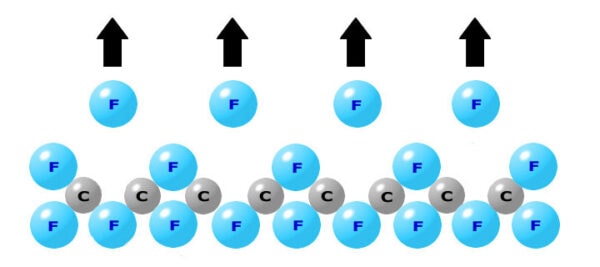
Etching fluoropolymer wire and cable is a process designed to enhance the surface properties of the wire, facilitating more effective bonding with other materials such as adhesives or coatings. Fluoropolymers, including PTFE (Polytetrafluoroethylene), FEP (Fluorinatedethylenepropylene), and PFA (Perfluoroalkoxy), are renowned for their low surface energy, inertness, and exceptional lubricity. However, these characteristics pose challenges for adhesion, making surface treatment imperative to enhance bonding.
Surface Preparation
Before initiating the etching process, thorough surface preparation is crucial. The fluoropolymer wire’s surface must be cleansed meticulously to eliminate any contaminants, oils, or residues that could impede the etching process. Typically, cleaning involves using solvents like isopropyl alcohol or detergent solutions, followed by rinsing with deionized water.
Etching Process
Chemical Etching: Chemical etching stands as a prominent method for modifying the surface of fluoropolymer wires. This process entails exposing the wire to a chemical solution that interacts with the polymer surface, generating microstructures and functional groups conducive to enhanced adhesion.
Etching Solutions: The choice of etching solution hinges on the specific fluoropolymer used and the desired surface properties. Common etchants for fluoropolymers include sodium naphthalenide solutions, sodium ammonia solutions, or sodium in liquid ammonia.
Etching Parameters: Parameters such as temperature, etchant concentration, and etching duration demand meticulous control to achieve the desired surface modification without compromising the wire’s mechanical integrity. It’s noteworthy that the etching process alters the wire’s color, with darker shades not necessarily indicating better bondability.
Etching Mechanism: Chemical reactions between the fluoropolymer surface and the etchant lead to the formation of polar functional groups like hydroxyl (-OH), carbonyl (C=O), or carboxyl (-COOH) groups. These groups augment surface energy and wettability, rendering the wire more receptive to adhesion.
Rinsing and Neutralization
Following etching, thorough rinsing with deionized water is imperative to remove any residual etchant from the surface. In some cases, neutralization may be necessary to counteract remaining acidic or basic residues.
Drying
Ensuring the wire is thoroughly dried post-rinsing is essential to eradicate moisture before applying adhesives or coatings.
Adhesion Enhancement
The etched fluoropolymer wire now boasts a modified surface conducive to enhanced adhesion. Adhesives or coatings applied to the wire exhibit improved wetting and bonding characteristics, resulting in stronger and more durable bonds.
Testing and Validation
Conducting adhesion tests is essential to evaluate the efficacy of the etching process. Techniques such as using a Dyne marker of 30 Dyne-cm and other methods like pull tests, peel tests, or shear tests help assess the bond strength between the fluoropolymer wire and the adhesive or coating.
In Summary
Etching fluoropolymer wire for adhesion stands as a pivotal step in augmenting its surface properties and bolstering compatibility with adhesives and coatings across diverse applications such as electronics, medical devices, and industrial equipment. Rigorous surface preparation, precise control of etching parameters, and comprehensive testing are imperative for achieving dependable and resilient adhesion.
